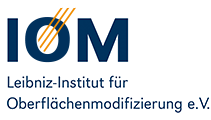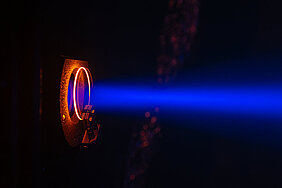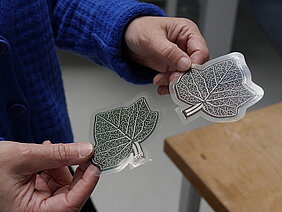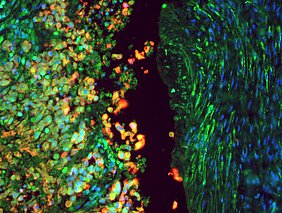Experience science up close! On June 20, we will open our laboratories to you and take you on a fascinating journey through the world of cutting-edge research. During three exclusive tours, you will experience firsthand what our scientists work on every day—in a way that is understandable, vivid, and close enough to touch.
Format: Guided tour (duration: approx. 55 minutes)
Meeting point: Cube / Main entrance to the Science Park
Start times for the respective tours:
- 6:00 p.m.
- 7:10 p.m.
- 8:20 p.m.
Here are our highlights, which you can also find on the Long Night of Science website under the heading „Naturwissenschaften und Umwelt”:
Tour 1: How do ion engines work – and what does an ion beam have to do with a rainbow?
Our researchers provide exciting insights into how ion engines work and show how ion beams are used in space travel and in the manufacture of high-precision surfaces. Discover a state-of-the-art ion beam facility up close and learn exciting facts about the design and operation of ion engines.
Tour 2: Removing micropollutants from water or protecting solar cells – our experts will demonstrate how this works live on site.
Membrane filters are used, for example, in wastewater treatment to effectively remove micropollutants. Solar cells, on the other hand, are used for sustainable energy generation – their performance can be significantly increased through special coating techniques. Experience live how membrane filters for water purification are manufactured or how innovative coatings make solar cells more efficient and robust.
Tour 3: Detailed images of insects and cells – our experts will demonstrate live how tiny structures can be made visible.
State-of-the-art microscopic techniques such as transmission electron microscopy (TEM) and environmental scanning electron microscopy (ESEM) will be presented. These methods provide fascinating insights into structures in the nanometer range – from the finest cell components to the surfaces of tiny insects.
Be there when research becomes an experience. Whether you are a technology enthusiast, curious, or a young explorer, we have something for everyone.
We look forward to your visit!




